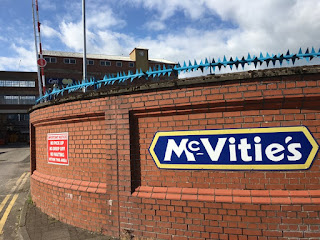Food Restrictions?
With the news of panic buying (yes, ladies and gentlemen, watch those toilet rolls!) and empty shelves, difficulties importing and exporting fresh food, and more of a fascination with cooking during lockdown3, the theme for my blog post seemed set. Of course it was also recently the anniversary of the start of food rationing during the Second World War. Lots of things which made me think about restrictions and limitations. Yes, blog theme sorted.
Now we can blame Brexit or the Pandemic, but our shopping habits have altered over the last 10 months. Queueing has returned, we now drench ourselves in hand sanitiser and wear face coverings. Oh, and not forgetting socially distancing whilst cruising the aisles to purchase our food. As I write this the connection with rationing which began on 8th January 1940 is not lost on me. Yet, it is also very different.
Rationing was introduced to make sure that everyone got a fair share of food. In January 1940, bacon, butter and sugar were rationed. As war progressed additional items became rationed. People registered with local shops, queueing became normal, coupons were everyday currency. But rationing had also been introduced at the beginning of 1918 as food shortages during the First World War became more of a problem.
However, it is different as I go to the supermarket and do my weekly shop without limitations on my purchase of sugar or butter. There maybe some spaces on supermarket shelves but I can normally get everything I want under one roof, and although I may have to queue to get in, I am able to make all my purchases in relative comfort. I do not have to visit different shops for different items. I still have my grandmother's WW2 eggless sponge recipe to deal with the shortage of eggs. I have chickens so we are never in a position to be short of eggs.
In both wars, people were encouraged to grow their own food to help supplement their diet. I did embrace the idea of growing my own food last year. My attempts provided us with cucumbers, tomatoes, runner beans and blackcurrants. I even managed to grow some parsnips for our Christmas dinner. Possibly not items I could enter into local agricultural shows but very tasty, and being in my garden over those months helped the hours pass during lockdown1.
Within the Museum collection, we have many ration books which cover the period from 1940 to the 1950s, when rationing finally ended. They show the name of the holder on the front cover. Imagine the person queueing for their allocated rations, working out their weekly meals, trying to be creative and inspiring with the ingredients available. On display at the Museum we also have a large poster produced by the Ministry of Food in 1918 linked to the rationing of meat. These items give us an a little insight into life on the home front during both wars, and the celebrate the role of women who managed to feed their families despite the restrictions. Now, time to make a cake. Where is my eggless sponge recipe...



Comments
Post a Comment